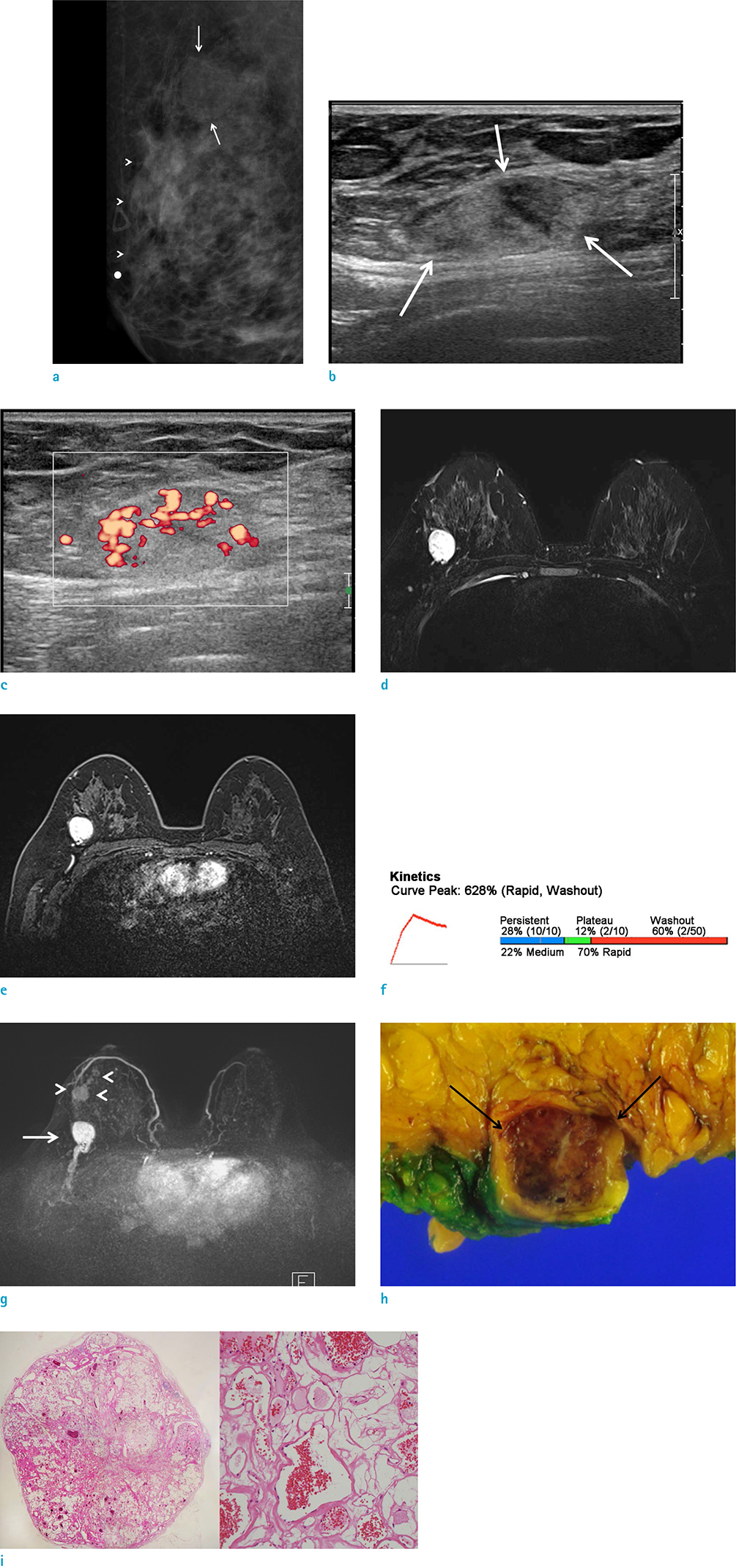Investig Magn Reson Imaging.
2015 Jun;19(2):131-135. 10.13104/imri.2015.19.2.131.
Complex Hemangioma of the Breast: Case Report, with Imaging Findings
- Affiliations
-
- 1Department of Radiology, Research Institute of Radiology, Asan Medical Center, University of Ulsan, College of Medicine, Seoul, Korea. jhcha@amc.seoul.kr
- 2Department of Pathology, Asan Medical Center, University of Ulsan, College of Medicine, Seoul, Korea.
- KMID: 2175595
- DOI: http://doi.org/10.13104/imri.2015.19.2.131
Abstract
- Vascular tumors in the breast are rare, and most can be classified as being either angiosarcomas or hemangiomas. Hemangiomas are benign vascular tumors that are usually identified incidentally. Here, we are reporting on a case of a complex hemangioma of the breast, and describing the mammography, ultrasonography, and magnetic resonance imaging findings for this patient.
Keyword
MeSH Terms
Figure
Reference
-
1. Glazebrook KN, Morton MJ, Reynolds C. Vascular tumors of the breast: mammographic, sonographic, and MRI appearances. AJR Am J Roentgenol. 2005; 184:331–338.2. Kim SM, Kim HH, Shin HJ, Gong G, Ahn SH. Cavernous haemangioma of the breast. Br J Radiol. 2006; 79:e177–e180.3. Rosen PP, Hoda SA, Brogi E, Koerner FC. Rosen's breast pathology. 4th ed. Philadelphia Wolters Kluwer Health/Lippincott Williams & Wilkins;2014.4. Yang LH, Ma S, Li QC, Xu HT, Wang X, Wang EH. A suspicious breast lesion detected by dynamic contrastenhanced MRI and pathologically confirmed as capillary hemangioma: a case report and literature review. Korean J Radiol. 2013; 14:869–873.5. Hayasaka K, Tanaka Y, Saitoh T, Takahashi M. Gadoliniumenhanced dynamic MRI of breast hemangioma. Comput Med Imaging Graph. 2003; 27:493–495.6. Vuorela AL. MRI of breast hemangioma. J Comput Assist Tomogr. 1998; 22:1009–1010.7. Jozefczyk MA, Rosen PP. Vascular tumors of the breast. II. Perilobular hemangiomas and hemangiomas. Am J Surg Pathol. 1985; 9:491–503.8. Tilve A, Mallo R, Perez A, Santiago P. Breast hemangiomas: correlation between imaging and pathologic findings. J Clin Ultrasound. 2012; 40:512–517.
- Full Text Links
- Actions
-
Cited
- CITED
-
- Close
- Share
- Similar articles
-
- Parenchymal Cavernous Hemangioma of the Breast showing Atypical Imaging Features: A Case Report
- Subcutaneous Cavernous Hemangioma of the Breast: A Case Report
- Hemangioma of the Breast: a Case Report
- Hemangiomas with the Variable Manifestations on Breast Imaging: Three Case Reports
- Immediate Breast Reconstruction after Resection of Cavernous Hemangioma


